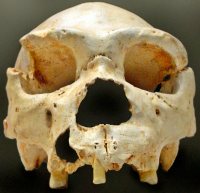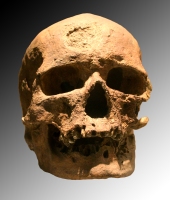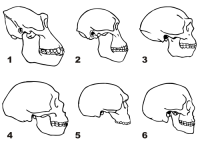While other groups of young-Earth creationists may hold differing opinions, the Institute for Creation Research insists that Neanderthals were humans too. This is all very well, but for reasons that are not at all clear they take this position to the extreme, minimising, misreporting, or denying any genetic and morphological evidence of differences between modern humans and their former contemporaries, and trampling over the more nuanced scientific view that Neanderthals were very closely related to us yet also a distinct group. Today Brian Thomas writes “Human Remains in Spain: Neandertal or Not?“, going so far that he ties himself up in knots.
A paper in Science – “Neandertal roots: Cranial and chronological evidence from Sima de los Huesos” (pdf), published on the 20th of June – investigated the accretion model of Neanderthal origins. The cliffs notes on this idea seems to be that the notable Neanderthal-specific features appeared at different times in a stepwise fashion, with those associated with the jaw for example developing before those related to the brain. The skeletons at the Sima de los Huesos cave in Spain, being around 430,000 years old according to this paper, lie in the middle of this transition and so provide a test case (who said you couldn’t test things in “historical science”?). The authors looked at the bones of 17 individuals and did indeed find Neanderthal faces with more archaic brains. They write: Continue reading







